For sufficient justification, elevated beds for gardening are now common in many residential landscapes. They provide a number of advantages, including a more efficient flow, insect prevention, and beauty.
Additionally, they may be constructed in a variety of forms and dimensions utilizing a range of supplies, rendering them suitable for a variety of gardening settings and price ranges.
We’ll look at some unusual do-it-yourself elevated gardening bed options in this piece. These items can be turned into lovely and useful planting beds that will benefit you year after year with a little imagination and work.
Ten Elevated Garden Bed Creative Ideas For Small Spaces:
1. An Old Elevated Gardening Bed Made Of Pallets:
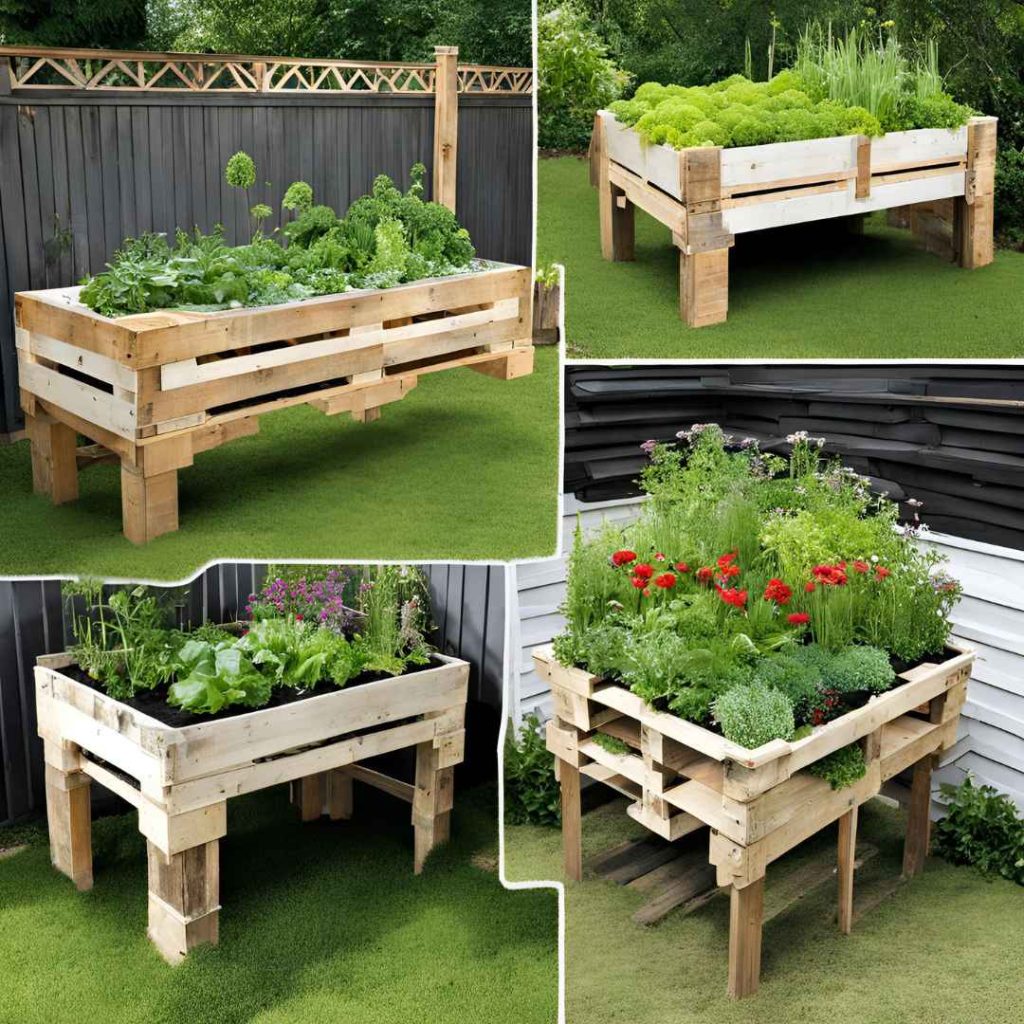
The Swiss Military cutlery of do-it-yourself activities are pallets. They’re easy to deal with, robust, and numerous. Additionally, they are typically available for complimentary or quite cheap. Just be sure there are no hazardous substances that could seep into the ground and that they are safe to use.
Make sure the wooden structure was processed with heat rather than chemically modified if you are planting foodstuffs like veggies and aromatic plants. Pallets that have been subjected to heat usually have an HT marking.
Pallets are also incredibly adaptable. You may construct a large box container from them or utilize them as upright containers. The estimated value of the pallet’s boards and the kind of elevated bed will determine if you will require a mechanism to prevent debris from leaving.
Others utilize inexpensive timber for covering the pallets’ within it, while others utilize landscape upholstery that is attached to the inner surface of every pallet.
2. Elevated Gardening Bed Made Of Concrete Blocks Or Brick Blocks:
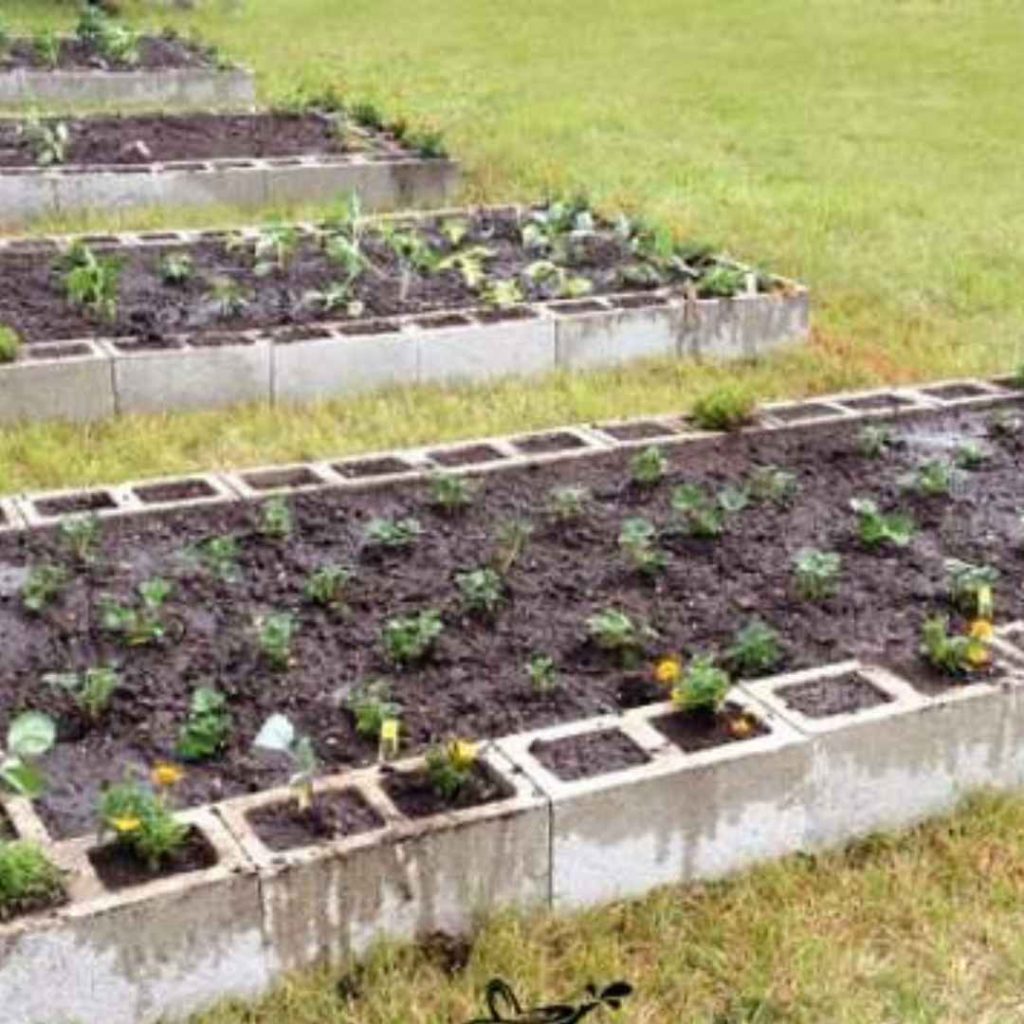
The following option is the concrete/cinder blocks elevated gardening bed, which is strong, useful, and adaptable. Cheap, readily available, and unexpectedly stylish in a manufacturing sector manner are concrete building blocks.
Additionally, their cavernous core can be used as an extra growing area. It resembles an outdoor space bed inside another gardening bed! You may frequently get masonry blocks for nothing or fairly inexpensively at building locations or internet advertisements, and they will serve you for almost eternity.
Contemporary block creations consist of environmentally friendly substances, unlike ancient masonry blocks containing coal ashes, which could leak pollutants into the ground. You may have noticed that these kinds of stones are harmful for horticulture.
Over the years, blocks of concrete could release acid into the substrate, which would raise its acidity level a little. However, this doesn’t pose a major issue for agricultural crops.
3. Repurposed Tires For Gardening Beds:

This may sound more unusual, but consider this: tires that are worn out You understood correctly! Considering tires are strong, absorb warmth (which plants enjoy in colder climates), and can be recycled, they make excellent elevated beds.
Why not place flowers in tires, which are available for free almost anywhere and have an endless lifespan? I tried it since I had a few of them lounging in my yard.
Avoid growing agricultural crops in tires if you’re experiencing any concerns about their health. Rather, you may use them to create lovely blooming gardens.
4. Growing With Straw Bales:

Straw bales can be used as the elevated planting container itself or as one of the elevated bed’s borders. They are typically reasonably priced and can be purchased from nearby agricultural enterprises or gardening retailers.
Straw bales can be arranged in any form or dimension to create a border for an elevated planter; then, fill the center with dirt and vegetation. This tends to be of an interim measure because the straw will decay as time passes, but as it does, it will yield composting as well as nutritious mulching for the gardening space.
Planting straight into straw bales is a further prevalent landscaping method. To get them ready for establishing, they need to be initially prepared.
In order to provide an environment for growth that is rich in nutrients, reconditioning involves cutting down the straw into smaller pieces.
5. Elevated Garden With An Old Bathing Vessel:

If you are interested in shifting away from conventional gardening containers, ancient bathtubs can be used to create adorable, vintage-style gardening beds. They are frequently offered by secondhand constructing equipment outlets, scrap meters, and home remodeling websites.
Although bathtub containers are interesting and stylish, repurpose them as beds for gardening is also a fantastic method of reusing and recycling an old item rather than throwing it away.
Before pouring your gardening blend, remember you poke a passageway in the lower side (or utilize the readily accessible draining opening found in every bathtub) to prevent the buildup of additional fluid.
6. Elevated Landscapes Connected By Railroad Connections:

An inventive and reasonably priced method to give the backyard personality is to use railroad stakes as elevated plant beds. The connections are an effective choice for your landscaping demands because of their resilience.
To save the substrate and edible plants, look for unprocessed connections or use a barrier because matured, processed ties may leak the toxic substance petroleum.
As with many elevated planting beds, start by determining the measurements of the container and selecting an uneven section of the landscape. Then, if you want to stop invasive plants from sprouting up by means of the bed, cover it with landscaping material.
The railroad ties should then be positioned in the appropriate pattern and secured in place using spikes or steel. You can start sowing as soon as you load the garden bed with dirt and manure.
7. Gardening Beds In Stock Reservoirs:
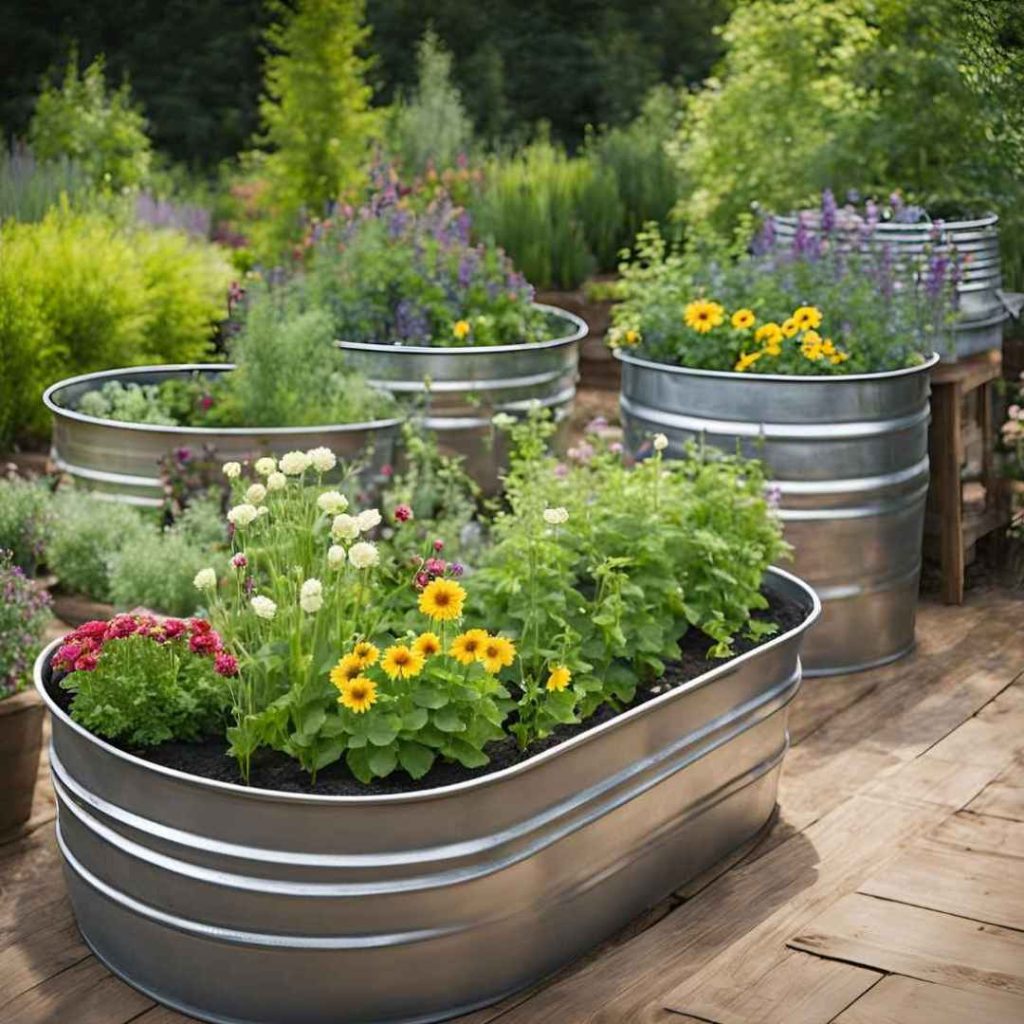
Do you like the beauty of farmhouses? If you said “of course,” zinc-plated watering containers could be the ideal container for your landscape. Stock barrels are great for creating strong, rustic-looking elevated beds for gardening. You can purchase them at farming supplying retail outlets, or you might be lucky to get some second hand tanks for a low price.
When refilling tall carriers, such as stock reservoirs, a common tip is to load the bottom with yard trash from the year prior and other recyclables that surround my residence, such as falling foliage and lawn trimmings. Then, you may cover the highest part with topsoil. It spares a ton of funds spent on fertilizer and costly ground.
8. Growing Beds Made From Restored Timber:

Next, we’re using repurposed timber to create a rustic look. For a bed that is elevated wood provides an affordable and sustainable alternative. Renovation locations, abandoned farmhouses, and specialized retailers can offer free or inexpensive waste lumber. For longevity, pick hardwoods that are inherently impermeable to rot, such as mahogany or oak.
You have a lot of options when it comes to the height and dimensions of your elevated gardens with wooden beds. I used surplus timber from a building venture to make the beds upstairs. The elevated containers were quick and easy to make, and the material was inexpensive.
9. Recycled Planter For a Dresser:
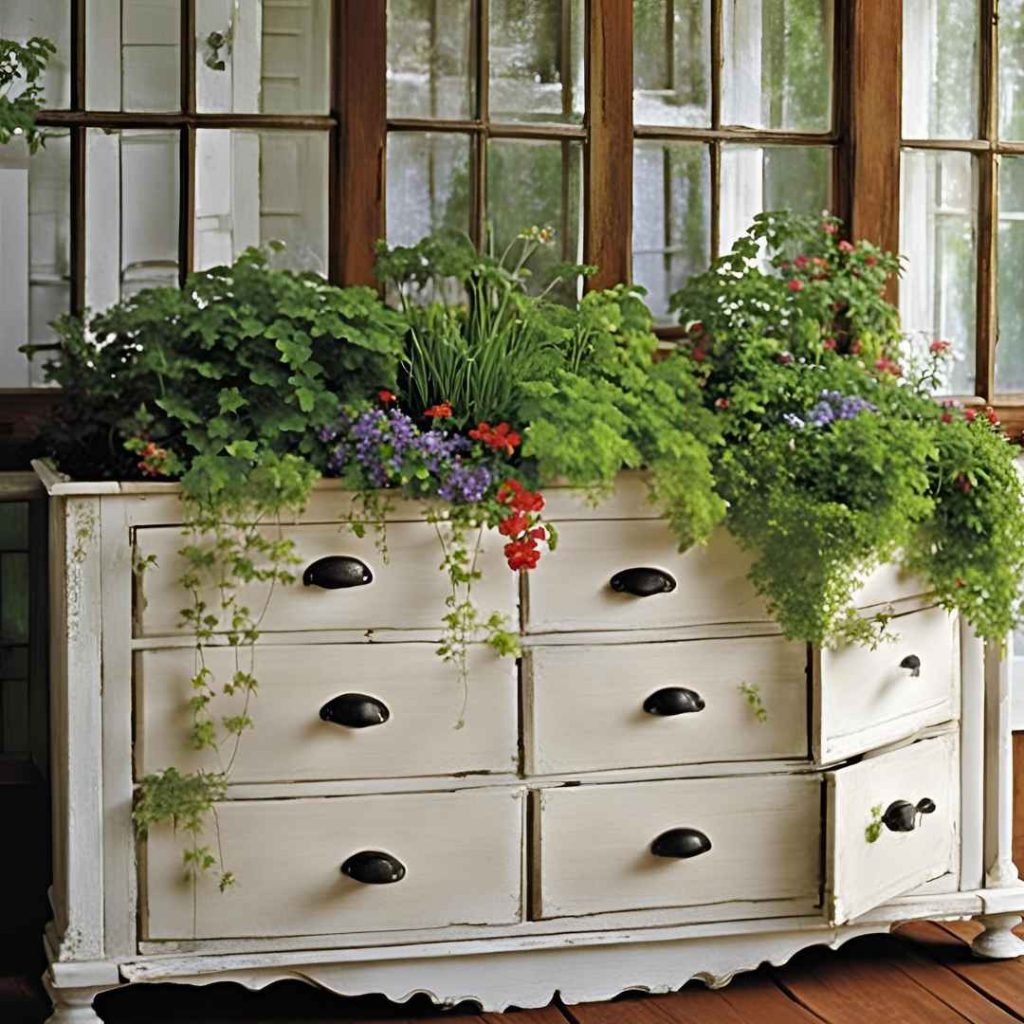
The cupboards on an antique dresser can be used as separate gardening portions to create a distinctive gardening bed container. It’s an excellent choice to cover the compartments with landscaping cloth to assist in retaining the ground in place, and ensure the piece of furniture is strong enough to survive conditions outdoors.
An antique furniture can also be used as an organizer with divisions by taking out the compartments and laying the entire piece horizontally. It’s effective! The primary benefit about reusing drawers is that it requires very little building, making it an excellent choice for novices.
10. Gardening Bed Made Of Woven Willow:
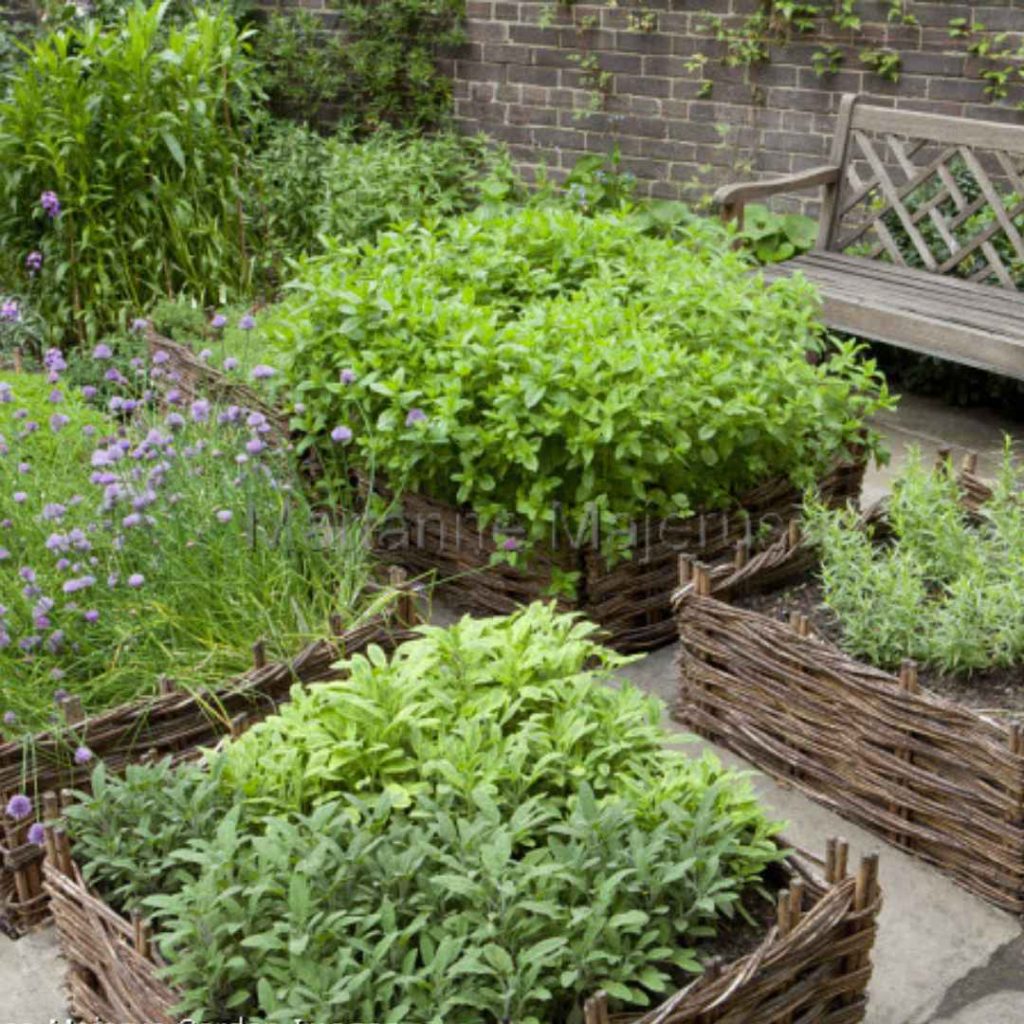
Anyone who wants their yard to have a fanciful, fairy-tale feel might consider handwoven willow beds. Because of their flexibility, willow limbs are ideal for braiding. Gather lengthy, pliable willow leaves to construct a willow bed.
Newer is preferable. In order to create a barrier, drive strong pillars into the substrate in the pattern of your planting area and thread willow limbs between the edges of the pillars.
Until you get to the level that you want, keep interweaving the limbs together. Terrain the bed and get ready for the native birds to begin chirping over your amazing bed!
